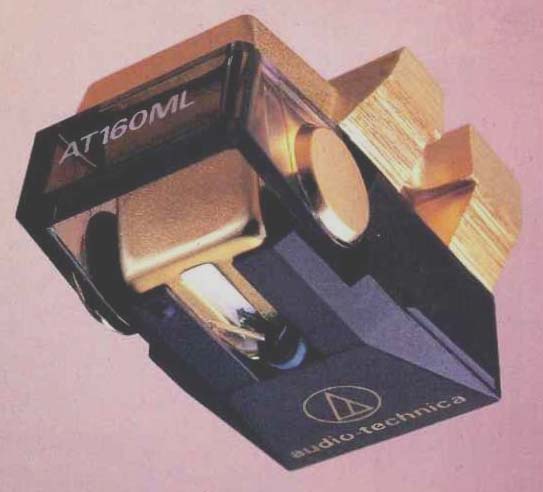
Manufacturer's Specifications:
Type: Moving magnet.
Stylus: MicroLine, nude-mounted, grain-oriented, square diamond.
Frequency Response: 5 Hz to 35 kHz.
Channel Balance: Within 0.5 dB. Separation: 31 dB at 1 kHz, 21 dB at 10 kHz.
Recommended Vertical Tracking Force Range: 0.08 to 1.8 grams.
Tracking Ability: 90 microns at center vertical tracking force (VTF), 100 microns at upper VTF.
Output: 5 mV at 1 kHz and 5 cm/S.
Recommended Load Impedance: 47 kilohms and 100 to 200 pF.
Vertical Tracking Angle: 20° (IEC/ DIN standard).
Cartridge Weight: 8.1 grams.
Price: $275.00.
Company Address: 1221 Commerce Dr., Stow, Ohio 44224.
The AT160ML cartridge, introduced 'n early 1984, succeeds the AT155LC as the top of Audio-Technica's moving magnet line. While the 155 remains in the line, the 160 sports several important developments-reduced cantilever mass, the new MicroLine stylus shape, and an improved stylus guard. The cartridge comes in an attractive plastic case with a universal headshell and an assortment of accessories. The case itself will display and store two cartridges in universal shells. The case's back can be removed for access to the accessories, which include an overhang gauge, a left/right inclination gauge, two brushes (the usual stylus brush and a special one to reach the recessed contacts in a universal tonearm mount), an Allen wrench for unlocking the headshell azimuth adjuster, a flat-bladed screwdriver, and the usual mounting hardware. All in all, this is an unusually complete and very well thought-out set of accessories, which nicely complements a top-of-the-line phono cartridge.
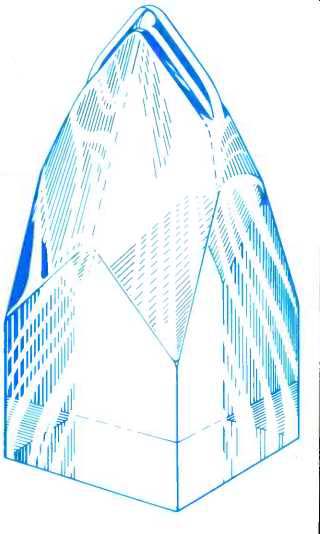
Fig. 1--Drawing of a MicroLine stylus. Note how the shape is an attempt
to contact the maximum vertical distance of the groove wall.
The AT160ML is one of the first cartridges on the market to use the new MicroLine stylus design (see Fig. 1). To produce this radically new tip shape, the square, grain aligned diamond stylus is cut away at the edges of the normal contact area to form a microscopic ridge, which rides at 90° to the record groove. This shape allows more vertical contact than is possible with almost every other design, and only one or two other designs compare in this regard. In addition, since the front and back sides of the ridge are parallel, the shape of the footprint area contacting the record groove wall does not broaden as the stylus tip wears. It also appears likely that discs will be worn at a slower rate, particularly discs which are hard to track because of their high velocities. Further, not only will new records be tracked better, but older discs, ones with moderate amounts of wear confined to specific levels of the groove wall, will be reproduced better. While it might fairly be said that all of these benefits could be claimed by the successively more radical generations of stylus tips, there can only be one "Best Tracking Cartridge" at each point in time. Certainly, Audio-Technica's AT160ML is an extremely strong contender for that crown at present.
The cantilever is 0.3 mm in diameter and, like its predecessor in the AT155LC, it is made of beryllium, one of the lightest and stiffest metals. In the AT160ML, it is gold-plated, as part of an effort to flatten frequency response by control ling and reducing resonances. Audio-Technica uses what they term a Vector-Aligned Dual Magnet system, which positions two tiny cylindrical magnets in the shape of a "V" to match the angles of the left and right groove walls on a stereo record. These magnets are arranged between the laminated pole pieces, which are para-toroidally wound to reduce sensitivity to hum. Immediately to the rear of the magnet and pole-piece assembly, and located at the fulcrum, is the radial damping ring, which AT tells us is individually hand-tuned. Such hand-tuning, incidentally, can do a good deal for a cartridge's response. In a cheaply made cartridge, hand-tuning can bring the unit within spec; in high-end cartridges like the AT160ML, hand-tuning will bring the response within very fine tolerance.
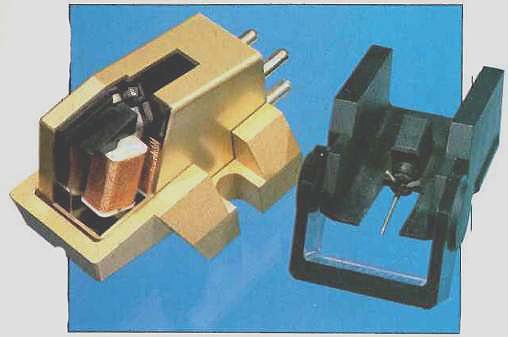
Fig. 2--This large-scale model shows how the coils in the AT160ML
are arranged.
Measurements
After measuring an inductance of 565 mH and a resistance of 760 ohms, I mounted the AT160ML in the tonearm of the recently introduced AR Turntable and aligned it using Telarc's Omnidisc. The AT160ML weighs 8.1 grams, which is at the heavy end of the range for today's cartridges, and what with the additional weight from screws, nuts, and so forth, I found that the AR's counterweight was not heavy enough to balance the cartridge. I therefore machined an additional mass for the arm and proceeded with the tests.
As is the practice of this magazine's reviewers, measurements are made on both channels to assure accuracy, but only the left channel is reported unless there is significant variation. During the test period, temperature was 70° ±2° and the relative humidity ranged from 50% to 70%. The following records were used in making the measurements reported here: CBS STR-100 and STR-112; JVC TRS-1007; Deutsches HiFi No. 2, and Shure Brothers TTR-103, TTR-110, TTR-115, and TTR-117.
The tracking force found to be optimum was 1.5 grams, and the anti-skating force was set to 1.8 grams, again the optimum setting. The load resistance was 47 kilohms and the total load capacitance was 200 pF. As one might expect with a relatively heavy cartridge such as this one, the low frequency arm-cartridge resonance (12-dB rise of 6.5 Hz) was at a lower frequency than one would optimally prefer.
This is within the warp-wow frequency region and should be of concern to those who play significant numbers of warped discs. The peak would be lowered by use of a tonearm with a well-engineered decoupled counterweight.
The AT160ML's frequency response (see Fig. 3) was within 1.5 dB from 40 Hz to 20 kHz, using the CBS STR-100 test record. Using the JVC TRS-1007 test record, the channel-to-channel separation at midrange frequencies was a bit over 30 dB, decreasing smoothly to about 23 dB at 10 kHz, and to 15 dB at 20 kHz.
Static vertical compliance was 42 x 10^-6 cm/dyne, while dynamic vertical compliance was 9.2 x 10^-6 cm/ dyne. The lateral compliance was found to be 8 x 10^-6 cm/dyne. The vertical tracking angle was found to be approximately 20°, using an optical readout system. Output was found to be 5.3 and 5.8 mV (1.50 and 1.64 mV/cm/S) for the left and right channels respectively, for a channel balance within 0.22 dB. Figure 4 shows the square-wave response as obtained with the CBS STR-112 test record. An expanded 'scope trace revealed the rise time to be 18µS with the normal load of 47 kilohms and 200 pF. Increasing the capacitive load to 700 pF increased the rise time to 22 µS; 700 pF is probably outside any real-world conditions. The cartridge is well damped, showing only one cycle of sonic-region oscillation during square-wave tests, the last half cycle being rather small. This is followed by ultrasonic oscillations at a frequency of about 37 kHz, which are on the test record, probably as a result of cutterhead assembly ringing.
Using the 3.54 cm/S, 45°, 1-kHz signals from the CBS STR-100 test record, the total harmonic distortion was found to be 1.3%. IM distortion, using CBS STR-112 (400/4000 Hz, 4-to-1), was: Lateral (+9 dB), left 0.9%, right 1%; vertical (+6 dB), left 1%, right 1.2%. Tests of tracking ability showed that the AT160ML is outstanding in its ability to handle highly modulated discs.
The cartridge easily tracked the highest vertical and horizontal 300-Hz bands of the Deutsches HiFi No. 2 test record. The recorded levels from the correction table are 55.4 microns (0.00554 cm) at 10.32 cm/S at +5.86 dB, and 114 microns (0.0114 cm) at 21.5 cm/S at 12.10 dB, respectively.
The cartridge was also able to track the highest (+18 dB) 300-Hz lateral and highest (+12 dB) 300-Hz vertical bands of the CBS STR-112; the + 18 dB band approximates the highest levels found on commercial recordings. With Shure's TTR-103, some slight mistracking was evident on the highest level of side 1, band 8, which is composed of 1 and 1.5 kHz, mixed at equal levels and recorded at 40 cm/S peak velocity. The AT160ML successfully tracked this disc's previous band, which was recorded at 31.7 cm/S peak velocity. The cartridge also tracked all bands of Shure's Obstacle Course Era IV (TTR-115) except for level 5 of the flute and harp test. Shure's Era V Obstacle Course (TTR117) contains a complex signal composed of 200 Hz, 2.1 kHz, and 17 kHz; all six bands on this disc were tracked without audible mistracking or waveform distortion being visible on the 'scope. An X/Y plot revealed good linearity and phasing between the two channels.
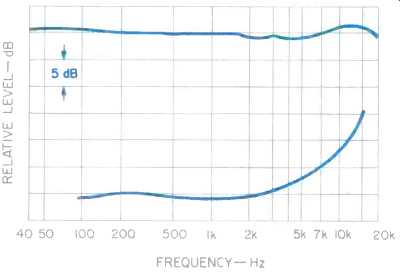
Fig. 3--Frequency response from CBS STR-100 and separation from JVC TRS-1007.
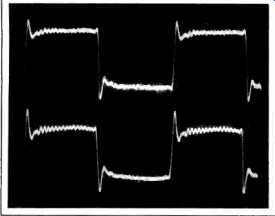
Fig. 4--Response to 1-kHz square wave from CBS STR-112.
Use and Listening Tests
The Audio-Technica AT160ML was used to audition several digitally mastered and direct-to-disc recordings, using the same AR Tonearm and AR Turntable with which the measurements are performed. In addition to the three recordings from Delos and the Mobile Fidelity disc mentioned in my March 1984 review of the Micro-Acoustics 630, two other sampler discs were used for auditioning and are to be especially recommended. These are Opus 3's Test Record No.1, "Depth of Image" (79-00) and Test Record No. 2, "Timbre" (80-00). (Available from Scandinavian Sounds, P.O. Box 3656, San Clemente, Cal. 92672.) These recordings contain superbly recorded music and require no instruments for the evaluation of one's system. (Editor's Note: We have been using this disc pair around the office for some months, principally to check loudspeaker voicings as a preliminary to full-scale reviews. Frankly, we're in love with them. They contain virtually every sort of music one might wish-vocal, organ, piano, guitar, violin, both solo and in groups. I can't think of any cut that isn't acoustic, rather than electric, and natural, rather than colored.-E.P.) As its uniform frequency response would suggest, the AT160ML presented a neutral, unrestrained sound over a wide range of recorded material. This included the broad variety of types presented by the Opus 3 records, particularly the massed choirs, plucked strings, and percussive sounds, such as drums and finger-cymbals. Highs were unrestrained and possessed a sheen, but not to the point of excessive brightness. The midrange was natural, and the bass was solid. With the misshapen discs I use to test for warp-handling ability, a small amount of warp modulation of sustained mid-frequency notes was heard. This check of arm-cartridge interaction with record warp is worst-case testing, since there seldom is a need or desire to play such severely warped discs and a good decoupled tonearm can reduce such modulation to inaudibility.
The imaging of the AT160ML was good. The left-to-right stereo stage was stable, with individual instruments and soloists maintaining their positions. Front-to-back imaging was similarly good, particularly with the Gitarrkvartetten handling of J. S. Bach's "Invention No. 14" on the Opus 3 "Depth of Image" disc.
To sum up, then, the Audio-Technica AT160ML is not an inexpensive cartridge since it lists at $275, but it is reasonably priced considering its level of performance. One particular appeal will be to those who wish to upgrade to a cartridge possessing one of the newest and best-tracking stylus shapes. The AT160ML is also a cartridge with good linear frequency response, excellent separation, and superior tracking ability. In short, it's a strong contender for state-of-the-art.
---George Shellenberger
( Audio magazine, Sept. 1984)
Also see:
Audio-Technica AT-32 Cartridge and AT-650 Transformer (Dec. 1981)
audio-talk from audio-technica -- Number 7 in a Series (ad, Sept. 1984)
ADC Model LMF-2 Tonearm & ZLM Phono Cartridge (Jan. 1979)
Audio-Technica AT666EX Disc Stabilizer (Jan. 1983)
= = = =